Ricochet is the best place on the internet to discuss the issues of the day, either through commenting on posts or writing your own for our active and dynamic community in a fully moderated environment. In addition, the Ricochet Audio Network offers over 50 original podcasts with new episodes released every day.
 Is This Any Way to Run a Railroad?
Is This Any Way to Run a Railroad?
For more than 16 years, I managed the government affairs function for a Fortune 250 company from its headquarters in southern New Jersey, across the expansive Delaware River from downtown Philadelphia.
It was a challenge to lobby federal agencies and Congress from someplace other than the Washington, DC area. After all, there are more than 12,000 registered lobbyists in Washington (under the Lobby Disclosure Act, certain “full-time” influencers must file with the House and Senate, including periodic disclosures), and most of them live and work in and around DC’s beltway.
Technology of course helped. But for those inevitable “in-person” opportunities to persuade recalcitrant public officials, there was Amtrak.
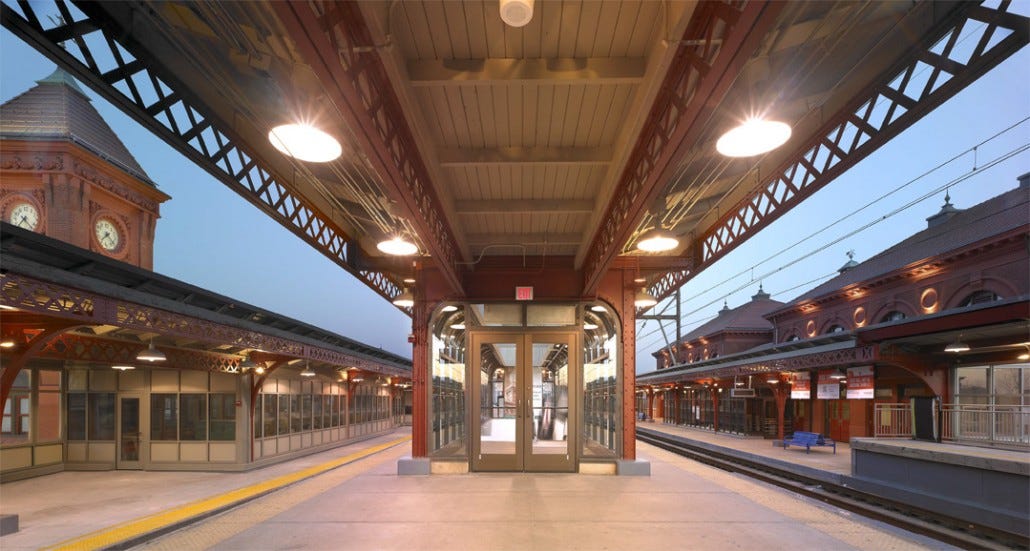
And I wasn’t alone. On many such trips, especially after “the last vote” on a Thursday afternoon, I could spot Members of Congress. Lots of them. Most, but not all, resided in first-class. On early morning trips from either Philly’s Union Station or Wilmington’s historic Frank Furness-designed century-old station, I spotted others who actually commute many days during a week when Congress is in session.
It’s well known that Delawareans expect their congressional delegation to commute via Amtrak. After all, on the modern, well-appointed and faster Acela trains, it’s 75 minutes platform to platform and two blocks to the nearest Senate office building. It’s an extra 20-30 minutes for the slower “regular” Amtrak trains that make a few more stops, especially those trains during morning and afternoon “rush hour.”
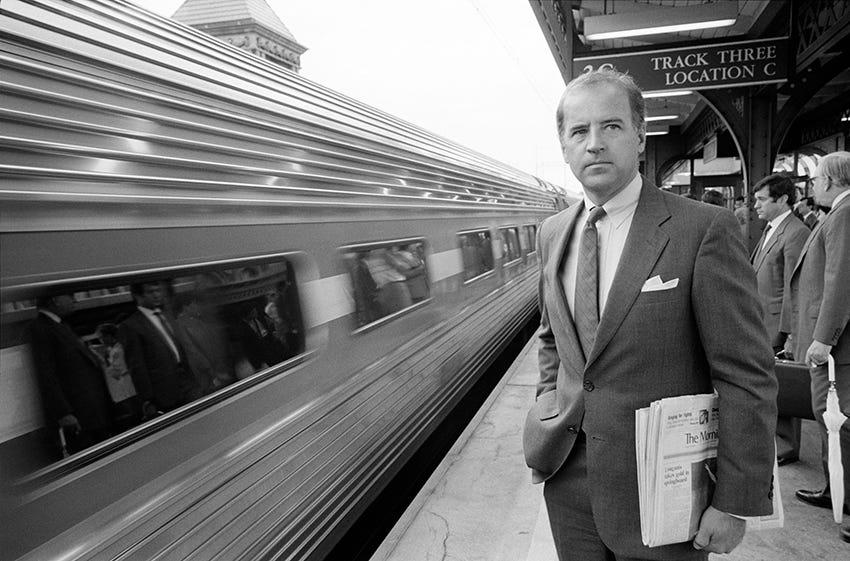
This is why Amtrak’s most celebrated patron was and remains Joseph R. Biden, who represented Delaware in the US Senate for most of six terms before ascending to the vice presidency. I spotted him many times at Wilmington’s Amtrak Station platform, now named after him, also my favorite station for trips to and from the nation’s capital. He almost always sat in First Class, sometimes joined by the late Arlen Specter, a Pennsylvania US Senator and one-time presidential candidate who died in 2012 after losing reelection in 2010. The conductors love Joe Biden, and they take great care of each other.
So well, in fact, that the Senate’s new $1.2 trillion “infrastructure” bill provides Amtrak with the lions’ share of $66 billion direct grants and federal-state partnership grants for rail improvements, especially in the northeast corridor. The Biden Administration had originally proposed $80 billion. That, for a government-owned but privately controlled National Passenger Rail Corporation that would operate as a “for-profit” enterprise, merging 20 failing passenger rail companies into a single entity.
Except that Amtrak has never made money, and in 2002, nearly declared bankruptcy. During the pandemic year of 2020, Amtrak lost over $700 million; in its best year ever for passenger traffic in 2019 – 32.5 million riders – Amtrak still lost money.
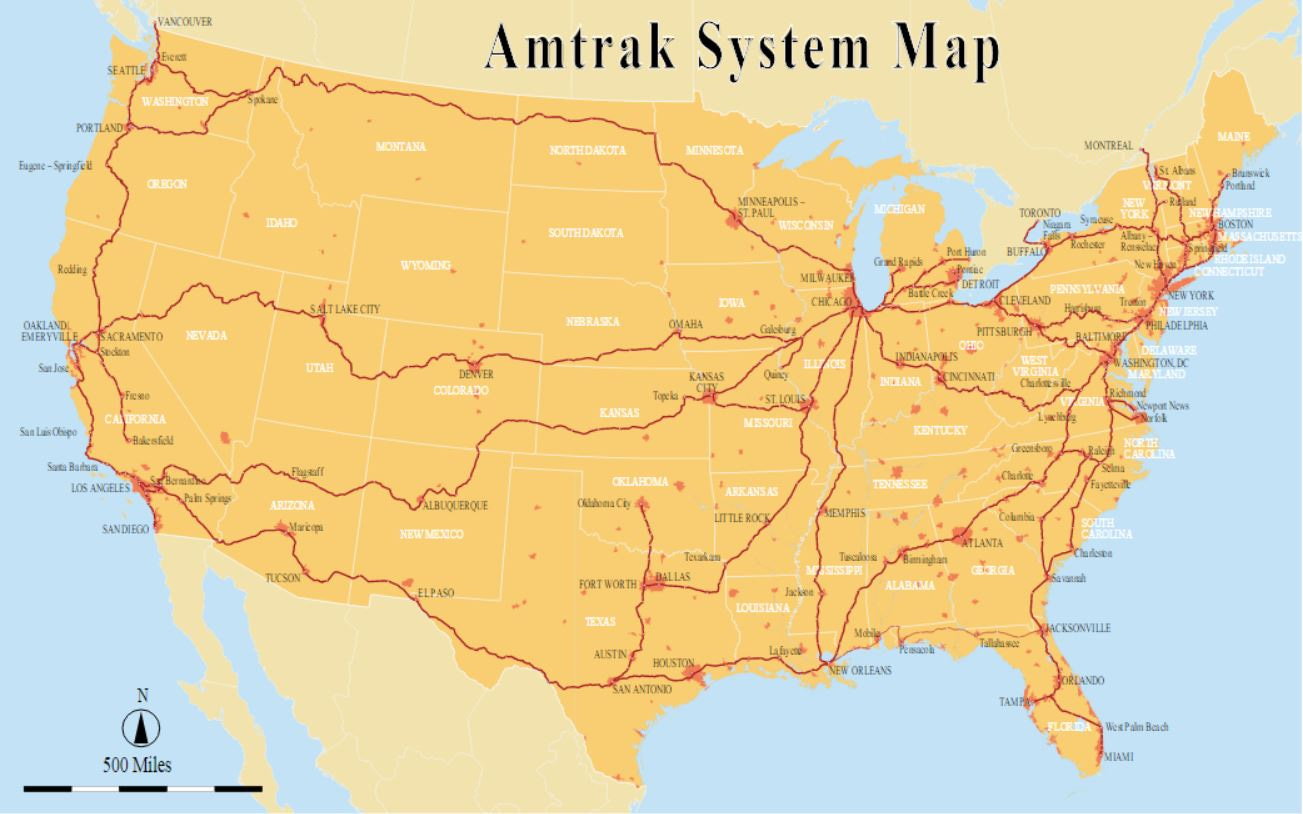
Why does Amtrak lose so much money? Thanks to Congress, they are forced to operate several highly unprofitable long-distance routes. According to Business Insider, “The Empire Builder, for instance, which runs a 2,230-mile route in 46 scheduled hours from Chicago to Seattle. Despite averaging near 500,000 annual riders, that fare revenue of just over $67 million covers only about 65% of the operating costs.”
Nearly every route outside of the northeast corridor loses money. Many routes are subsidized by states. They also provide very generous benefits to their employees.
Benefits aside, the lion’s share of Amtrak’s riders come from the northeast corridor – 12.2 million individual rides in 2019 – generally considered between Boston and Washington. There are also 29 state-supported routes (15 million riders in 2019) and 15 long-distance routes that attracted a paltry 4.4 million riders in 2019. Some long-distance routes have lost more than $300 per passenger. Not exactly a winning business model. Remember that “riders” mean each time a passenger gets on a train for a one-way trip. Perhaps Amtrak will tell us how many actual individuals bought tickets in 2019. From FoxNews.com:
Amtrak’s founders had not expected it to be a subsidized operation, according to Randal O’Toole, an American policy analyst with the Cato Institute.
“When it was created, they didn’t think it was going to lose money,” O’Toole told Fox News of Amtrak’s founders. “They created it not as a government agency but as a corporation with stockholders. They thought it was going to make money.”
Amtrak’s founders “testified in Congress they did not want to see congress subsidizing operating funds because it would just encourage wasteful spending on the part of the railroad being subsidized,” O’Toole said.
Anthony Haswell, considered the “father” of Amtrak, said in the 1990s: “I feel personally embarrassed over what I helped to create.”
And it is not like Amtrak or the federal government owns these long-distance rail lines. They are owned and operated by private railroads like CSX, whose slower-moving cargo trains take priority over passenger rail.
Ridership dropped by 50% during the 2020 pandemic year. High-speed Acela service, available only in the northeast corridor was suspended. It is slowly making a comeback as new, faster trains with speeds up to 125 miles per hour are introduced on the northeast corridor.
And it’s not just Senators and House Members who take Amtrak to and from Washington, up and down the northeast corridor, which runs all the way to Boston. A lot of New York and Washington media types can be spotted on the trains as well, especially the First Class section on the more expensive Acela trains. They have an impressive clientele. And they appreciate the support from your tax dollars.
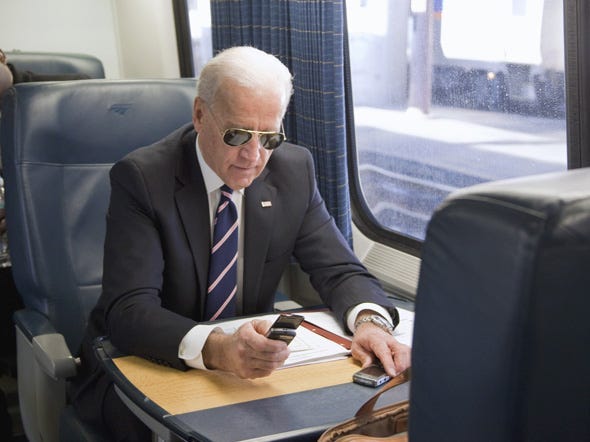
Amtrak would be profitable if it only operated in the northeast corridor. But no, it operates 500 stations in 46 states, many established and supported from Congress with your tax dollars, often with mandates and requirements, such as staffing for certain stations that add further to the costs, despite the presence of automatic ticket machines and Amtrak’s excellent iOS and Android apps.
In all, I probably rode Amtrak, including Acela trains, hundreds of times over my career, averaging around 50-75 trips and 15,000 miles annually. It wasn’t that the train got me to and from Washington any faster than a door-to-door trip takes via car; a plane ride to and from Philly was faster, and sometimes no more expensive. It was the convenience of being able to flip on my computer or phone and get some work done courtesy of the trains’ WiFi networks. I also loved the Acela clubs, especially in Washington’s Union Station that allowed me early boarding, along with an assortment of newspapers, snacks, and soft drinks (and conference rooms along with a business center), along with help changing or upgrading tickets.
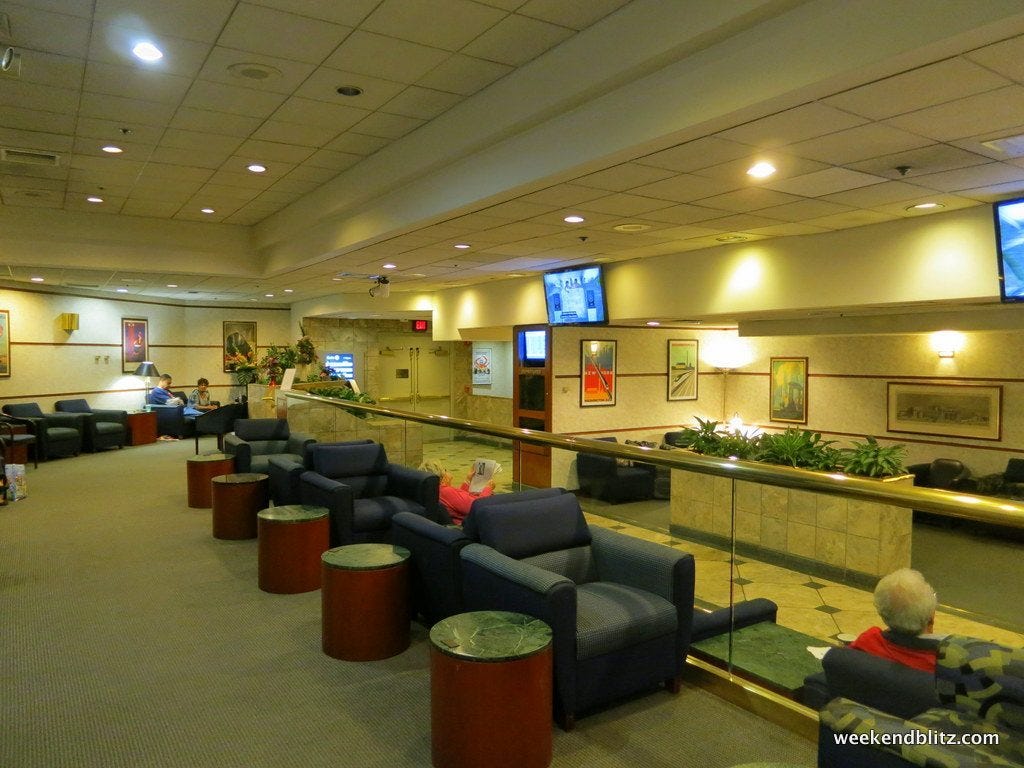
It also allowed me to get a little business done if I ran into a certain Congressman, shared a table with a Senator, and even ran into a governor now and then. But you had to be careful what you said given the reporters that might be nearby.
Yet while northeast corridor investments are welcome and perhaps justified where Amtrak is profitable, does it make sense to invest in mostly empty long-distance trains? So while I benefited from my 16 years of Amtrak ridership, Congress is poised to throw a lot of your tax money into long-distance train service that you’re not likely to benefit from, in any way. And it is just one way in which the $1.2 trillion so-called “infrastructure bill” is deeply flawed.
This is no way to run a railroad.
Published in General



Back in the late 60s, before Amtrak, I sometimes took the Empire Builder back to college in St Paul MN after spending a weekend at home. It was a crowded train by the time it pulled into St Paul on Sunday evenings, after having accumulated passengers all the way from the west coast. I was sad to see it get absorbed by Amtrak, but it had been losing money. And by the end of my college days I needed a car, so didn’t use it anymore.
I don’t know what the solution is, but getting Joe Biden out of the business would help.
Two questions. How many states does Amtrak serve? How many Congressional districts are near Amtrak lines?
If AMTRAK stations had secure parking like airports, I’d be riding a heckuva lot more. If they had more trains at better times, I’d ride even more often. Put another way, if AMTRAK was run like airports and airlines (but without much of the hassle), I think more people would take the train. Flying lost its appeal long ago. With flying now, you never know which insane passenger is going to erupt into a violent diatribe that ends up on the internet . . .
Yes,
because it is better to have the rail lines than not have the rail lines just in case a real war kicked off or something.
I feel the same way about fighter jet factories. You need to buy enough planes to keep the factories open and tooled in case you need to build lots of jets. The actual planes are sort of immaterial.
The history of the Mk14 torpedo and the casualties that it caused (by being terrible) largely comes from underfunded programs to build and maintain that capacity.
It’s easier to count the states that don’t have a bit of Amtrak. I see two of them for sure.
Truly excellent summary of Amtrack’s many problems. In some respects, Amtrack should have never been created.
Of course, beginning in the 50s and 60s, American railroads wanted to get rid of their passenger service because they believed it cut into their lucrative freight business.
Then, with some help from Congress (overregulation and taxation) the railroads managed to shoot themselves in the derriere through disasterous business decisions such as the merger of the New York Central and Pennslvania Railroads. When the PennCentral collapsed and became part of Conrail, all passenger service fell to Amtrack and, clearly, this has not been the answer.
I’m clearly not the expert but it may have been a better solution to provide subsidies to the railroads to continue passenger service rather than create another bureaucracy.
One other thing about AMTRAK: many of the stations are in the downtown areas of cities, and not in desirable locations. In some cases, the train arrives in the early morning hours (1-4 AM). The last place I want to be in those hours of the morning is a seedy urban area . . .
Copy that. From my own experience, I can’t remember a single station that was in a safe place.
Only 4 states have no Amtrak service of any kind. And that is the problem; 46 do, when less than 10 really make it profitable (MA, RI, CT, NY, NJ, PA, MD, DC, maybe VA in particular).
I’ve never lived on the East Coast. Occasionally I visit. I had heard of the Acela line, and I have enjoyed riding trains during my European visits.
I finally rode Acela’s first class from Washington, D.C. to New York’s Union Station round trip a couple of years ago. It wasn’t a bad ride. Union Station in New York isn’t great, though.
When I look at long distance passenger rail in general, it doesn’t seem to be profitable in any country. Despite my love of rail travel as a vacation experience, and my intention to ride some of those unprofitable Amtrak cross country lines, I’d vote to get rid of them as best for the country.
That’s a lot of votes.